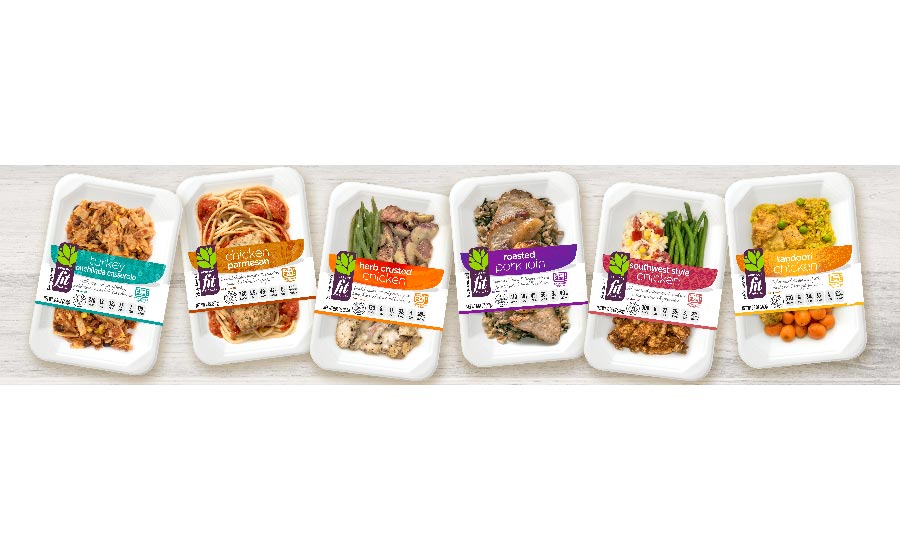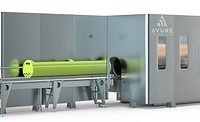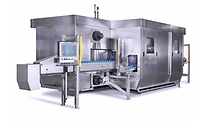Manufacturing News
HPP gets an official voice
Industry group focuses on advancing high-pressure processing

Nine founding companies have worked together with PMMI to create a new industry group, the Cold Pressure Council (CPC), to focus on the advancement of high-pressure processing (HPP) within the food and beverage industry.
HPP has been used successfully to “pasteurize” several varieties of foods with a relatively high degree of water content, thus extending their shelf life. Examples include avocados, lobster, salsa, lunch meats and even RTE meals.
The council’s founding members are Avure Technologies (now owned by JBT), Hiperbaric, American Pasteurization Company, Universal Pasteurization - Universal Cold Storage, Suja, Campbell’s, Evolution Fresh, Good Foods Group and West Liberty Foods.
“The formation of this council will help us take this technology to the next level,” says James Nicolas-Correa, director Hiperbaric USA, a supplier of HPP equipment.
“The new HPP council will develop industry best practices, establish guidelines for the Cold Pressure Verified label program and work to promote and grow HPP overall,” according to Jeff Williams, CEO of Avure. “Processing transitioned from the lab to the production floor almost 20 years ago. Now, it is gaining greater use with food companies for a variety of products including meat, seafood, guacamole, juices, dressings, hummus, salsa, baby food and smoothies.”
Hiperbaric and Avure Technologies currently account for 99 percent of HPP equipment sales worldwide.
For food and beverage processors that are not ready to take the plunge into purchasing HPP equipment, toll processors offer the opportunity to try out and use the shelf-life increasing technology with various food and beverage products. Hiperbaric shows at least 14 toll processors on its USA map, and Avure’s Williams says his company now has 25 toll processors in the US. Some toll processors started out as food processors looking for a toll HPP processor, but finally settled on purchasing their own HPP equipment and renting out time on it when not processing their own products, thus becoming new toll processors.
Perfect Fit Meals (Houston, TX) got its start using a toll processor, but found it more convenient to set up its own HPP equipment.
“We are two companies,” says Jasmine Sutherland, president of Perfect Fit Meals and president of Texas Food Solutions. “There is Perfect Fit Meals; the second is Texas Food Solutions. When we went to market, we were using a toller; it wasn’t the greatest experience for us. So, we decided to invest and buy our own machines.”
After Sutherland purchased her first HPP equipment, business took off in both directions—her own RTE meal products and a new tolling service run by Texas Food Solutions.
“The process has snowballed so fast, and a lot of neighborhood factories that we were friendly with were saying, ‘If you buy a machine, can I buy some cycles off of you?’” says Sutherland. “Texas Food Solutions processes for Perfect Fit Meals and quite a few other producers. We also started a little niche business in helping people get into HPP.” Sutherland’s two companies have scored another first—the first RTE meals to undergo HPP to extend their shelf life.
When should a processor invest in HPP equipment?
“Investment in your own HPP system is driven by volume and strategy,” says Avure’s Williams. “Even the smallest production HPP machines would require 2-3 million pounds or bottles of production per year to consider the investment. The strategy component means: Does the company want to be in the manufacturing business? Just as many companies use co-packers to make their products, they will use tollers to HPP them.”
How much does HPP add to the price of a product?
“That’s a simple question with a very complicated answer,” says Williams. “There are a lot of factors that go into ‘what does HPP cost,’ and the answer is different for each product that utilizes the technology. A common answer you will hear is that it adds 15-20 cents per pound. This depends on the product, the package and the type of HPP machine utilized. Larger machines help reduce operating costs, which improve the calculation. Then, we need to consider what costs are being removed. Can antimicrobials used in the food be reduced or eliminated? Are there other processing steps that can be removed? Finally, when HPP provides extended shelf life, the amount of scrap (or shrink) seen in the grocery stores can be significantly reduced. Imagine the savings if scrap rates are reduced 2-3 percent.”
There is one important thing to remember, says Williams. HPP is not a sterilization process. HPP products remain in the refrigerated distribution chain—thus, they are not shelf-stable products. In addition, products suitable for HPP must have a fairly high water activity.
For more information on the CPC, visit www.coldpressure.org.
Looking for a reprint of this article?
From high-res PDFs to custom plaques, order your copy today!







